Space calendar 2025: Rocket launches, skywatching events, missions & more!
Keep up to date with the latest space events with our 2025 space calendar!
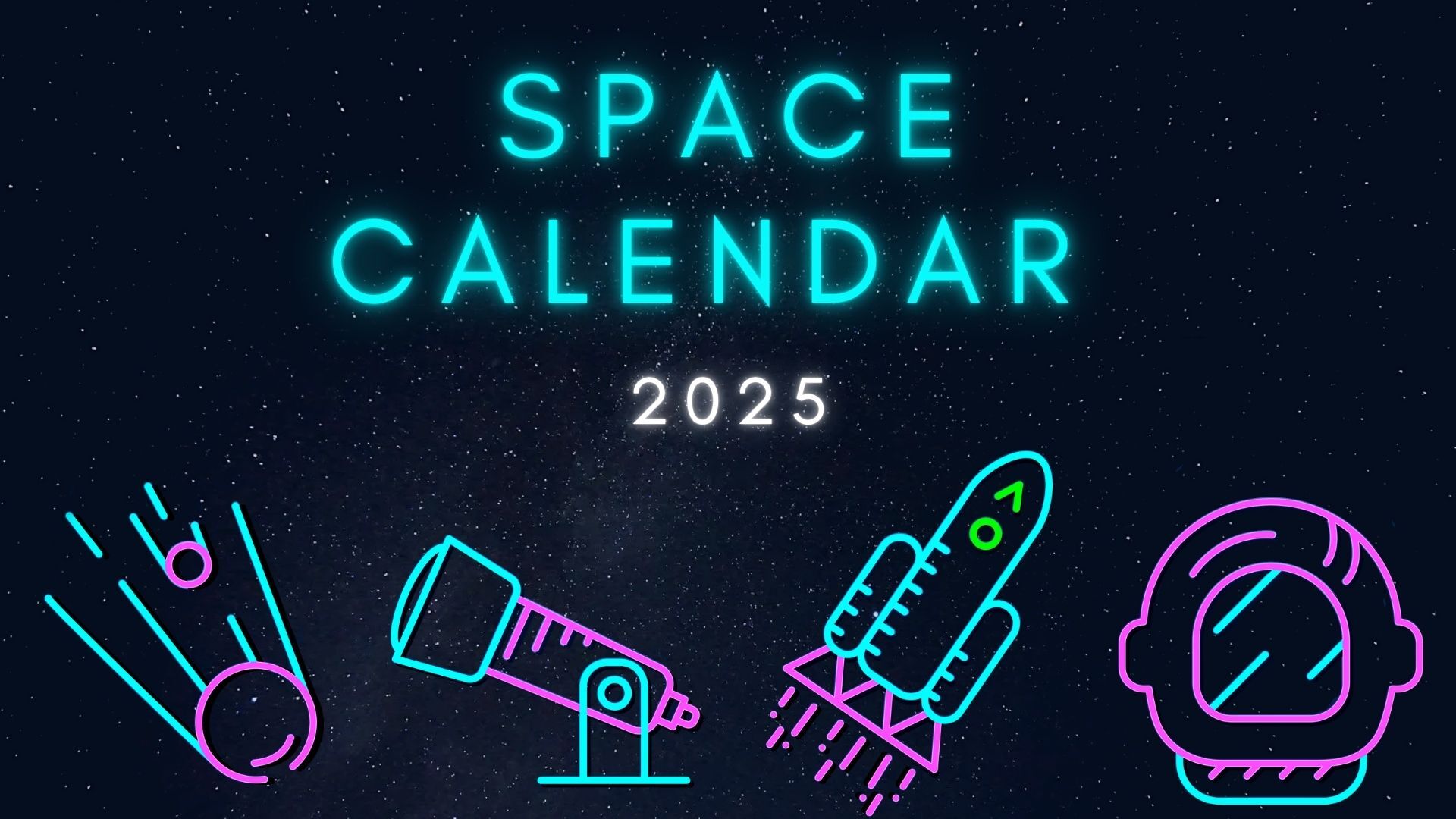
2025 is a busy year for spaceflight and exploration with countless launches, mission milestones, industry conventions and skywatching events to look forward to.
With so much going on, it's hard to keep track of everything. Never fear — keep up with the latest events in our 2025 space calendar. You can also Find out what's up in the night sky this month with our visible planets guide and skywatching forecast.
Please note: Launch dates are subject to change and will be updated throughout the year as firmer dates arise. Please DO NOT schedule travel based on a date you see here. Launch dates are collected from NASA events, ESA news, Roscosmos space launch schedule, Spaceflight Now launch schedule, Everyday Astronaut, Supercluster and others.
Related: Wondering what happened today in space history? Check out our "On This Day in Space" video!
Is there a rocket launch today?
April 2025
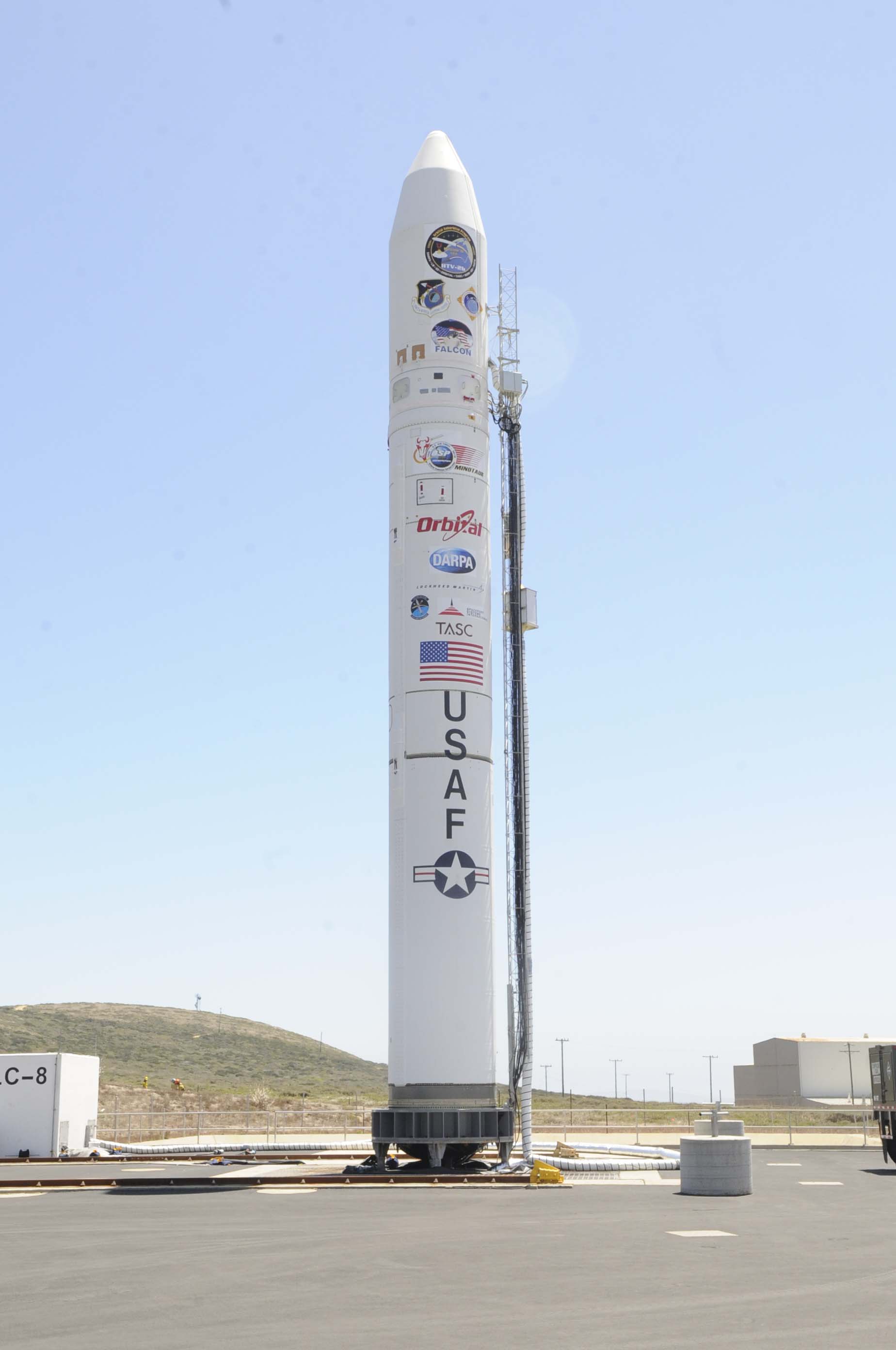
April 16, 3:00 p.m. EDT (1900 GMT): Northrup Grumman will launch a classified payload for the National Reconnaissance Office (NRO) and the U.S. Space Force Space Systems Command. The NROL-174 mission will lift off on a Minotaur IV rocket from Space Launch Complex-8 (SLC-8) at Vandenberg Space Force Base (VSFB), in California..
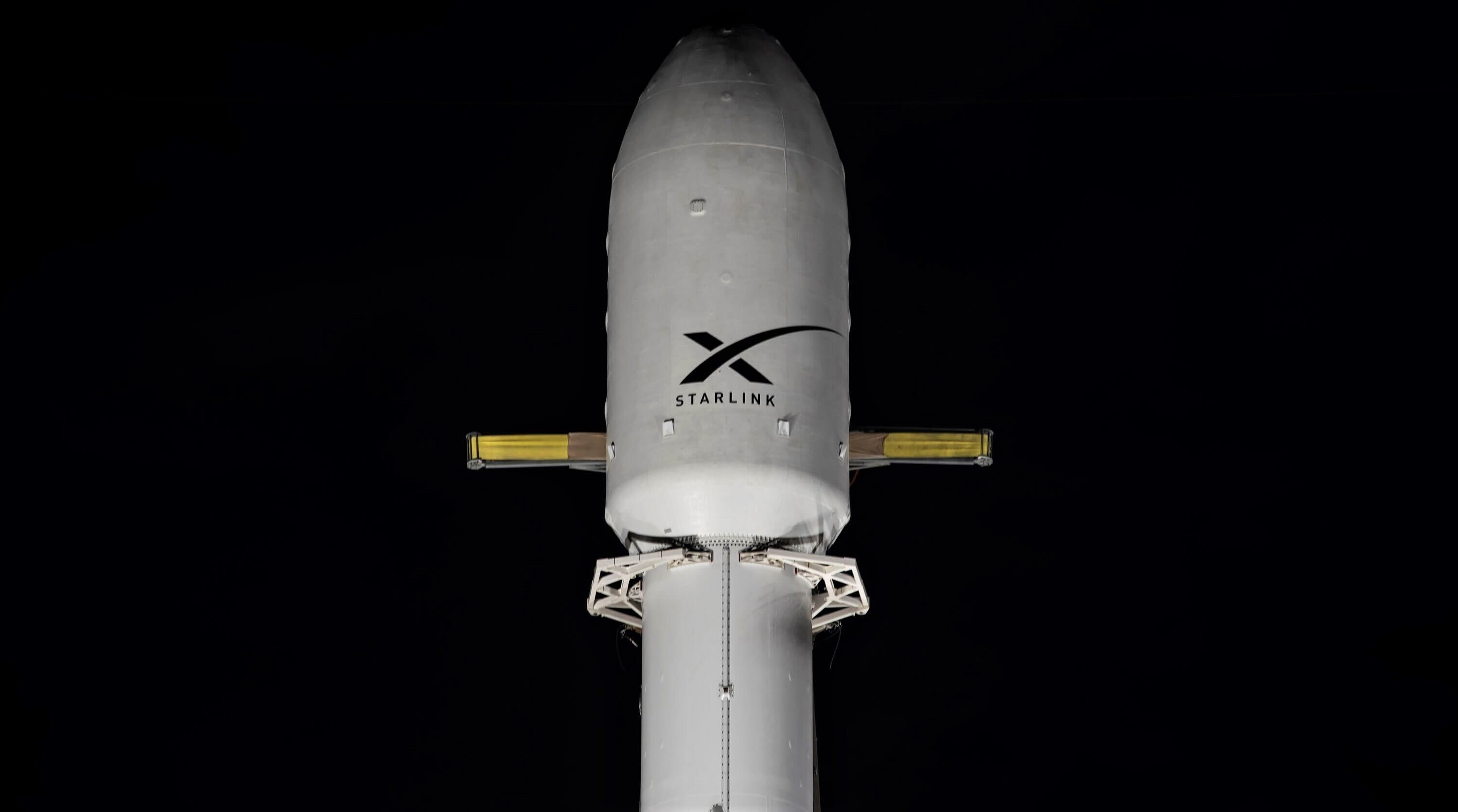
April 16, 10:24 p.m. EDT (0224 GMT, April 17): A SpaceX Falcon 9 rocket will launch a batch of Starlink satellites into low-Earth orbit (LEO), from SLC-40, at Cape Canaveral Space Force Base, in Florida. SpaceX's megaconstellation of LEO Starlink satellites provide low-cost internet to locations around the globe, with nearly seven thousand currently in the orbital network.
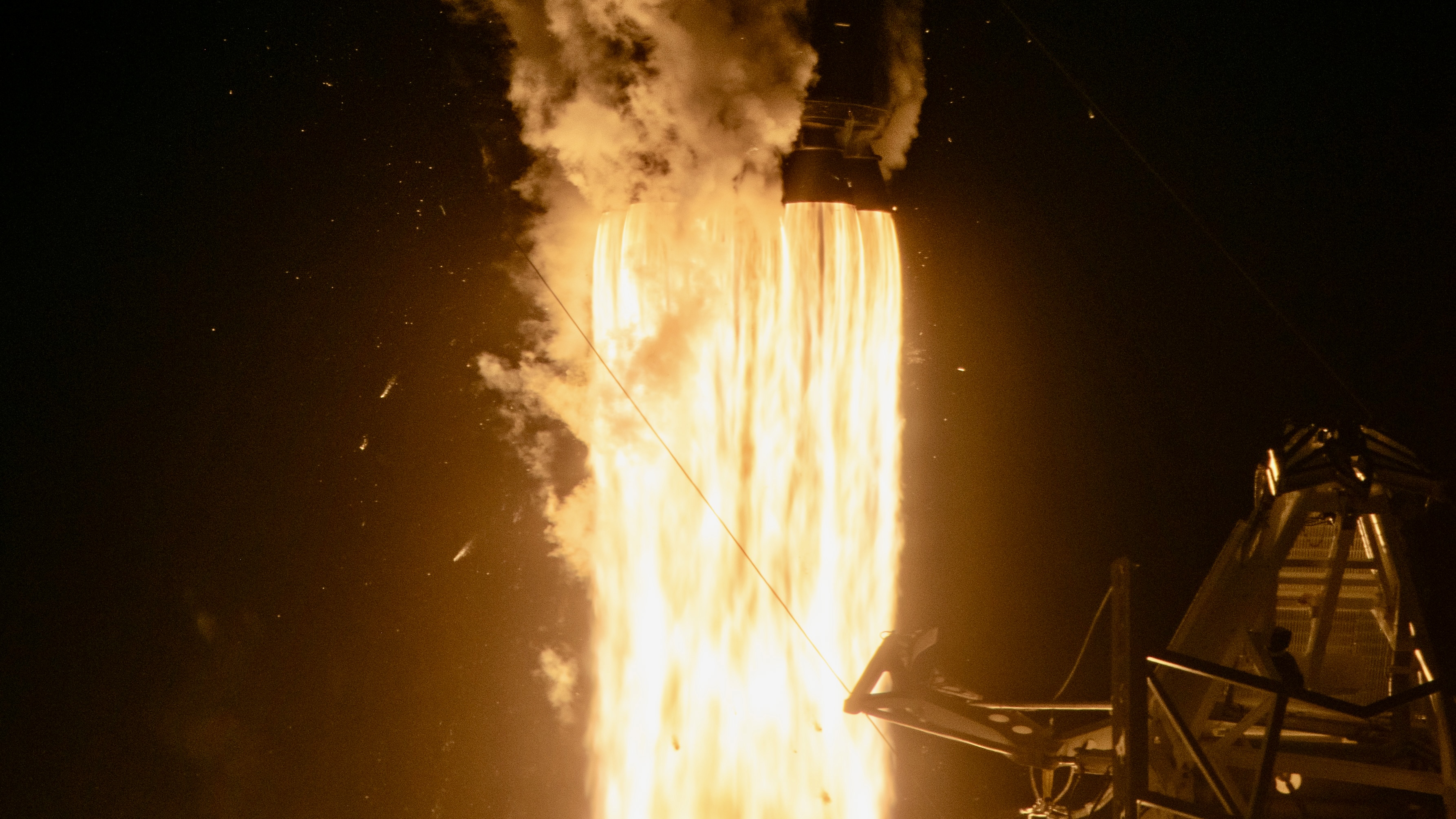
April 18, 8:00 p.m. EDT (0000 GMT, April 19): A SpaceX Falcon 9 rocket will launch a classified payload for the National Reconnaissance Office, from SLC-4E at Vandenberg Space Force Base, in California. SpaceX is planning to land this booster on a droneship in the Pacific Ocean.
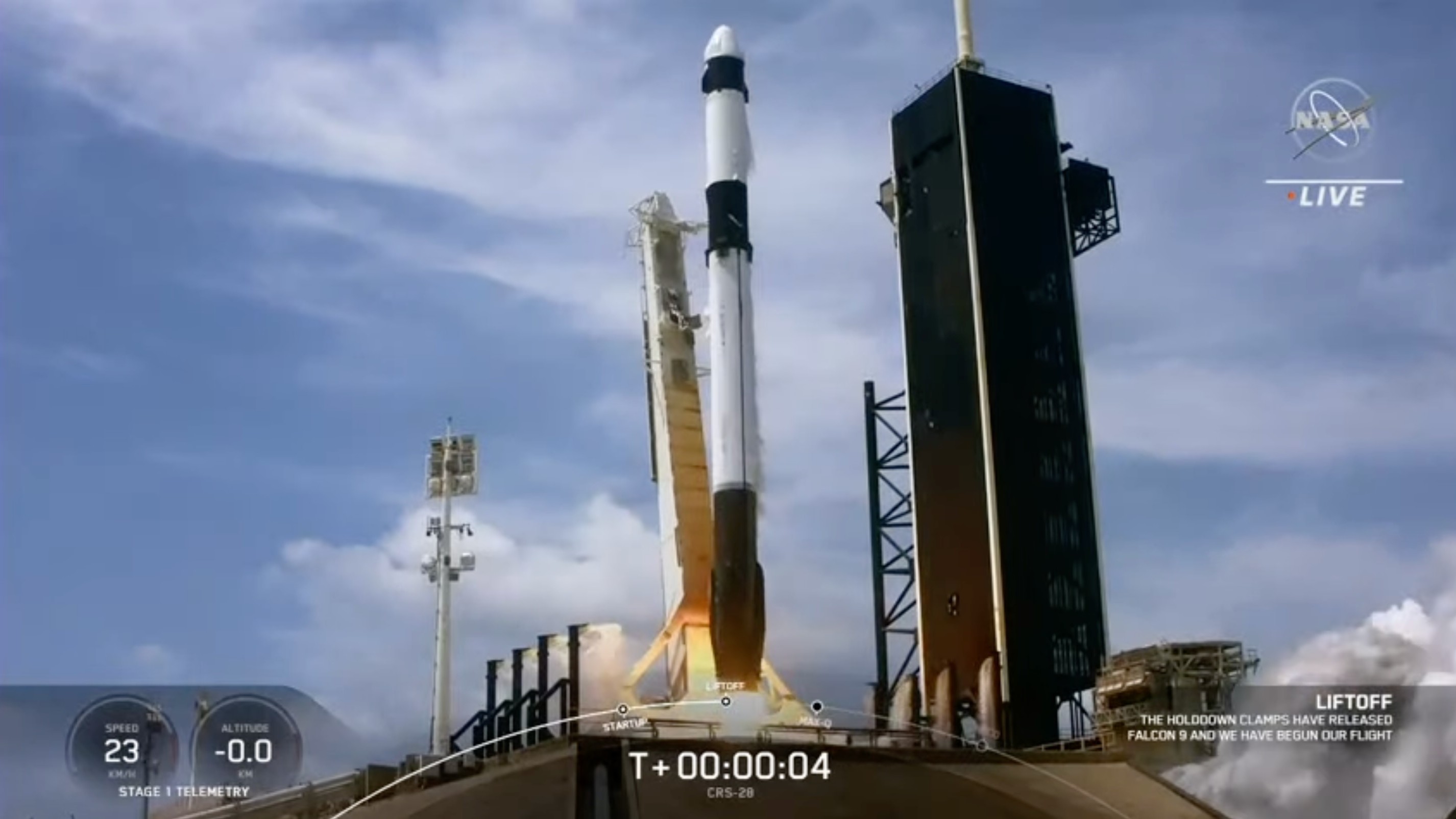
April 21, 4:15:34 a.m. ET (0815:34 GMT): SpaceX will launch the 32nd Commercial Resupply mission (CRS-32) for NASA during an instantaneous launch window from Complex-39A, at the Kennedy Space Center, in Florida. Each resupply mission to the station delivers scientific investigations in the areas of biology and biotechnology, Earth and space science, physical sciences, and technology development and demonstrations.
-
Booster landing at LZ-1, at Cape Canaveral Space Force Station
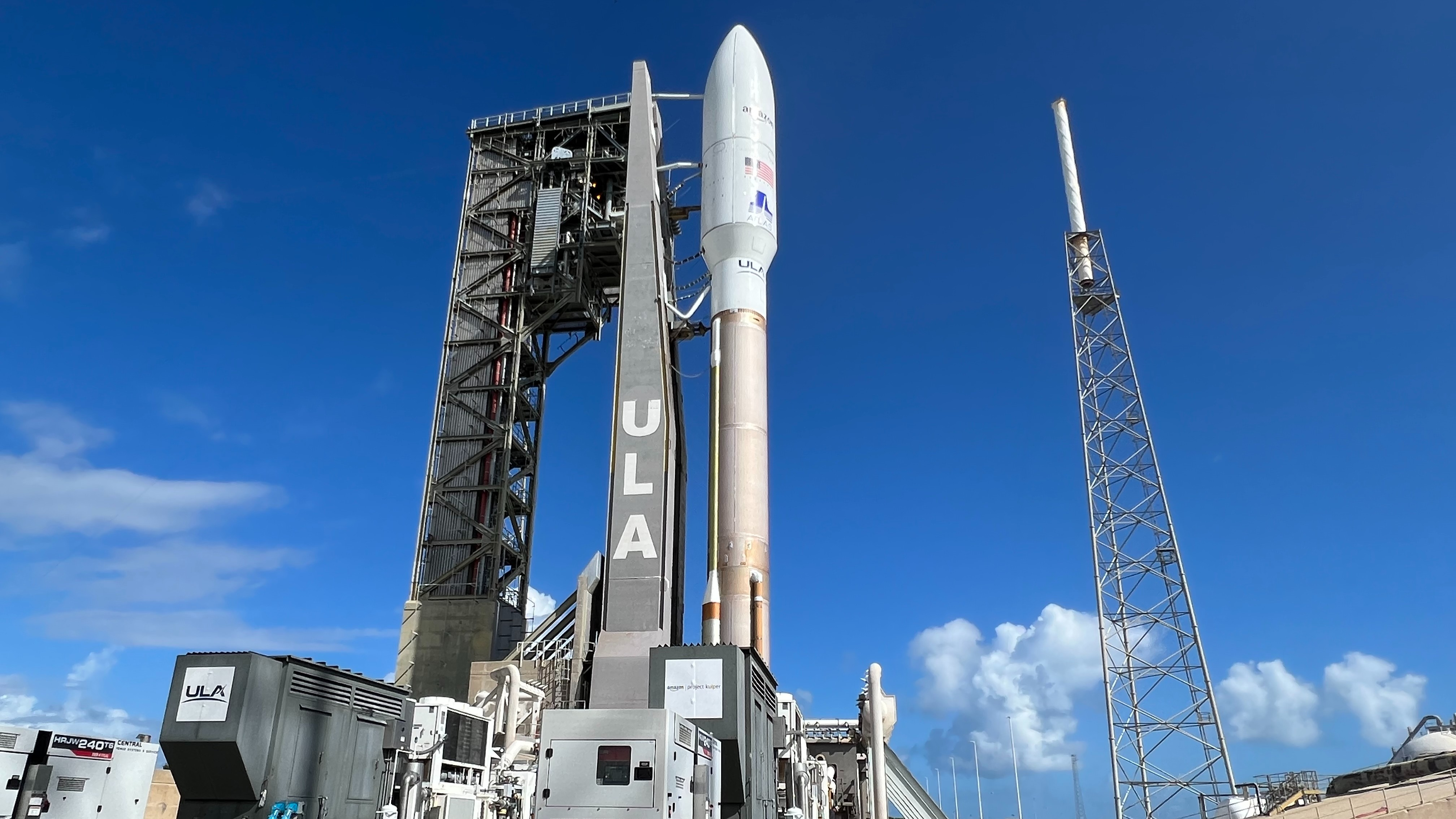
April 27, 7:00 p.m. ET (2300 GMT): United Launch Alliance (ULA) will launch an Atlas V 551 rocket to deliver the first batch of Project Kuiper megaconstellation internet satellites to low-Earth orbit. Liftoff for the KA-01 mission will take place from ULA's Space Launch Complex-41 (SLC-41), at the Cape Canaveral Space Force Station, in Florida.
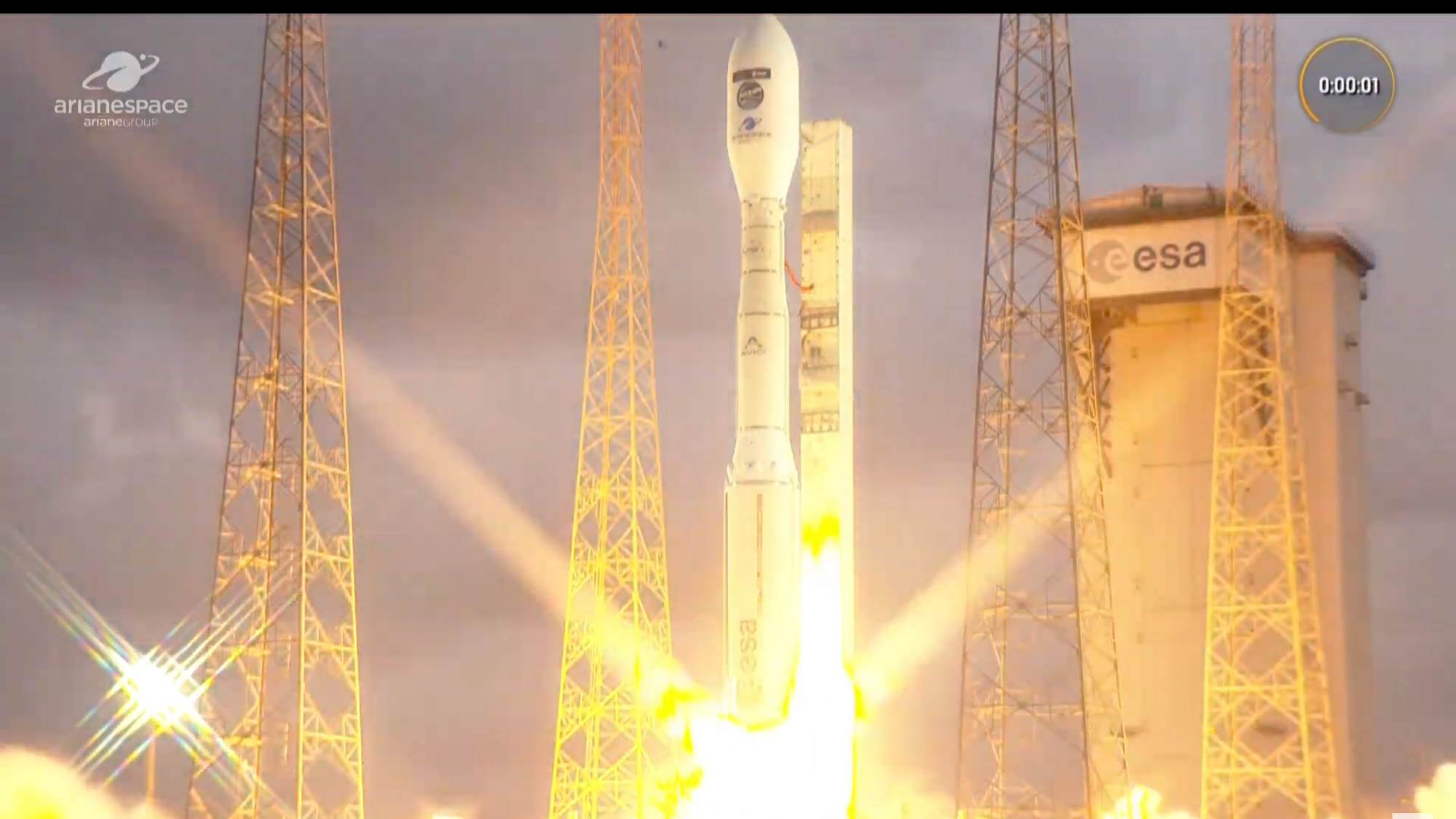
April 29, 5:15 a.m. ET (0915 GMT): Arianespace will launch the European Space Agency’s (ESA) Earth Explorer Biomass satellite from Europe’s Spaceport in French Guiana. The mission called “VV26”, will place its passenger on board a Vega C launcher, into Sun-Synchronous Orbit at an altitude of around 666 km.
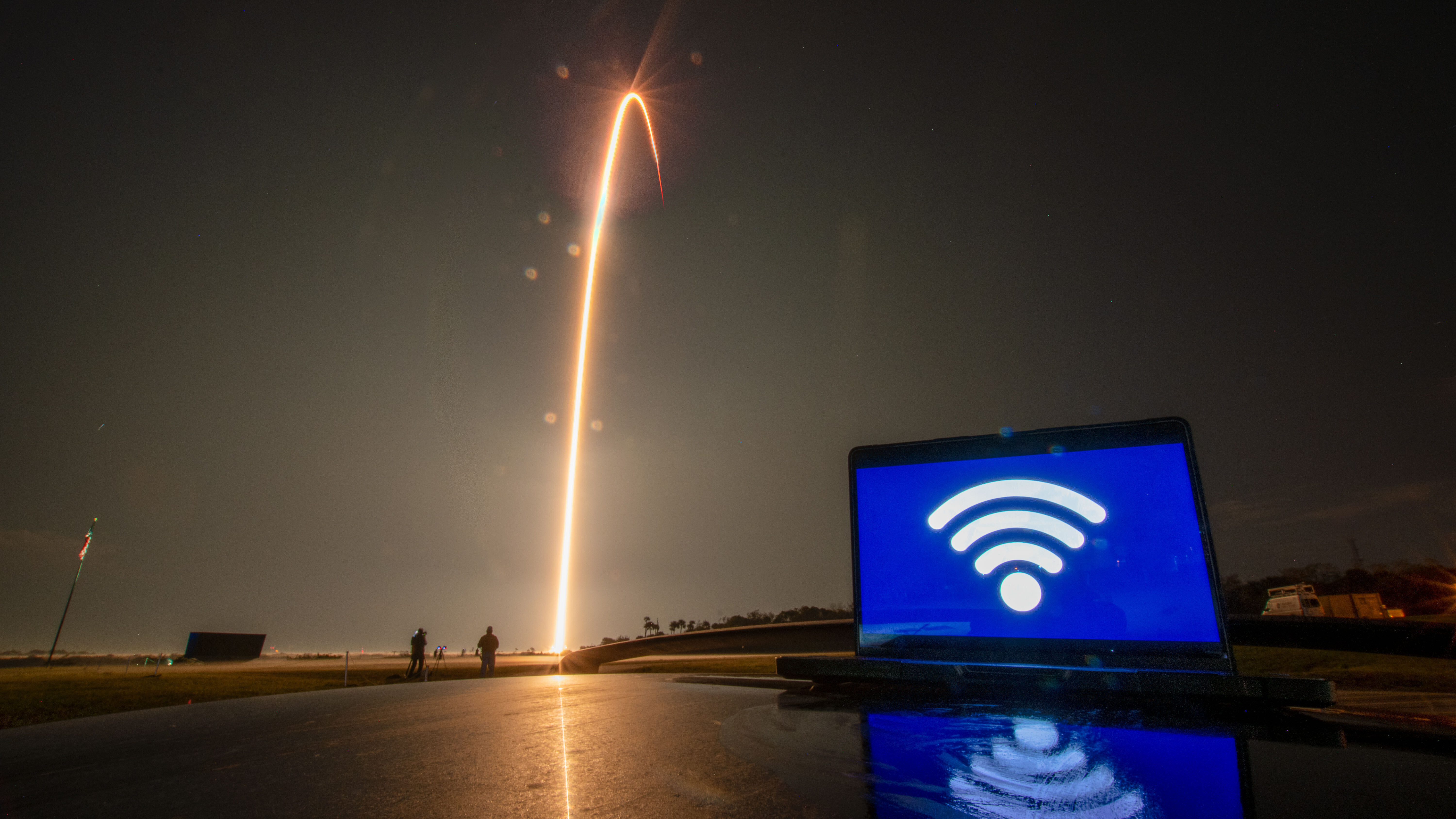
April 29, 8:00 p.m. ET (0000 GMT, April 30): A SpaceX Falcon 9 rocket will launch a batch of Starlink satellites into low-Earth orbit (LEO), from SLC-40, at Cape Canaveral Space Force Base, in Florida. SpaceX's megaconstellation of LEO Starlink satellites provide low-cost internet to locations around the globe, with nearly seven thousand currently in the orbital network.
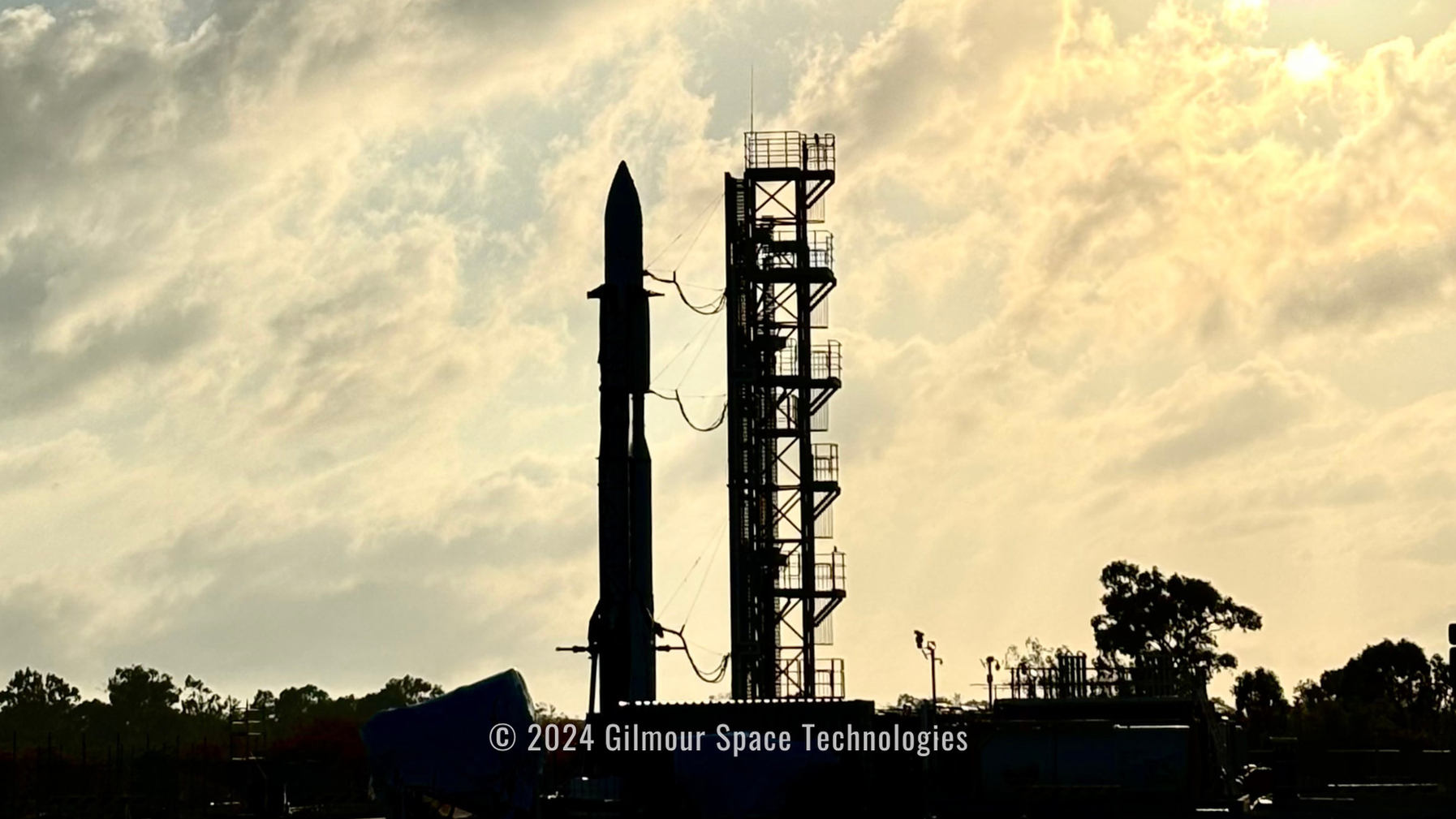
NET April: Eris is the first Australian-designed and built rocket aiming for orbit. It stands at 82 feet (25 meters) tall and can deliver a payload of up to 474 pounds (215 kilograms) to a 310-mile-altitude (500 kilometers) sun-synchronous orbit. Eris consists of three stages and uses hybrid propulsion.
-
Read more: The 1st Australian rocket to launch from Australian soil could reach orbit this month
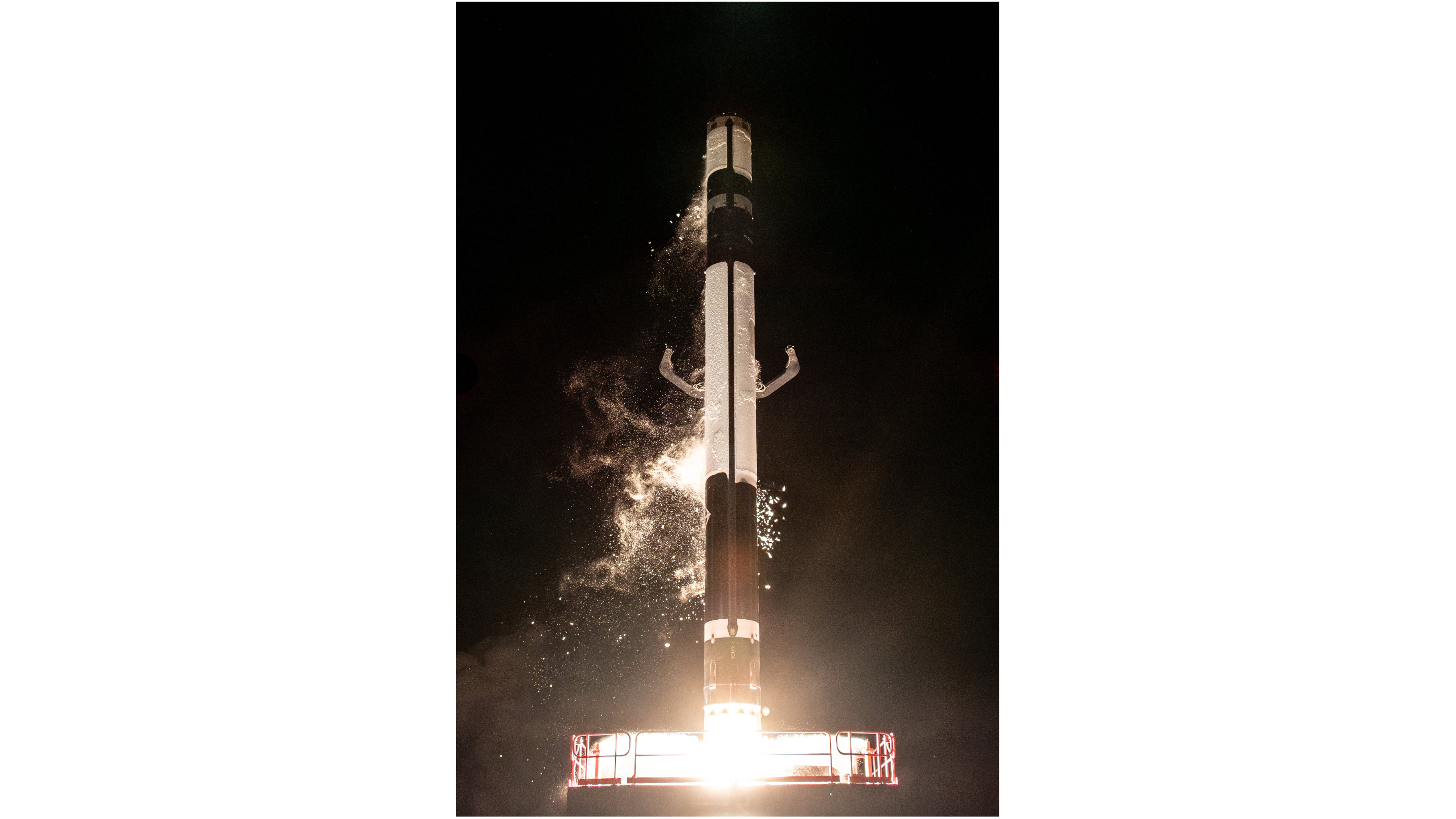
NET April: Rocket Lab will launch a HASTE (Hypersonic Accelerator Suborbital Test Electron) rocket from the company's Launch Complex 2, at NASA's Wallops Flight Facility, in Virginia. The payload, DART AE, is a 3D-printed hypersonic drone developed under the Hypersonic and High-Cadence Airborne Testing (HyCAT) program at the Pentagon's Defense Innovation Unit (DIU).
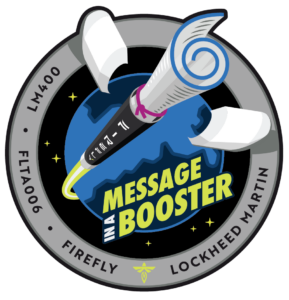
NET April: Firefly Aerospace will launch its second mission for Lockheed Martin, and its first of up to 25 for Lockheed over the next five years. The mission, "Message in a Booster", is part of a multi-launch agreement signed between the two companies, and will the LM 400 tech demo for a Lockheed satellite bus under development.
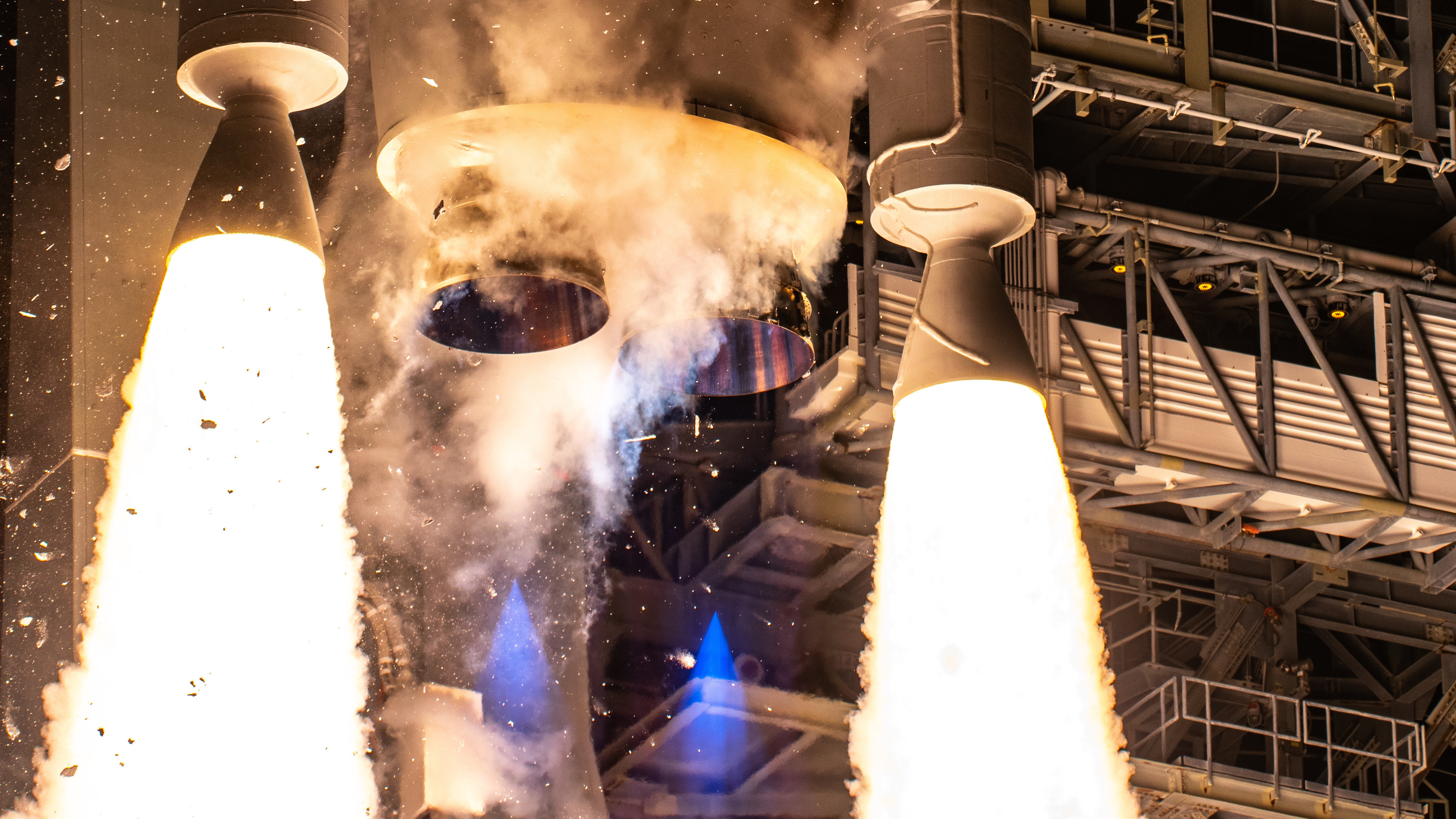
April 2025: United Launch Alliance (ULA)'s Vulcan Centaur rocket will fly its first of more than two dozen U.S. Space Force missions allocated under a national security space launch contract. USSF-106 is expected to launch sometime in the second quarter of 2025.
-
Read more: Powerful new Vulcan Centaur rocket gearing up for 1st Space Force mission
May 2025

May 5-9: The International Academy of Astronautics (IAA) will hold the 2025 Planetary Defense Conference in Stellenbosch, Cape Town, South Africa
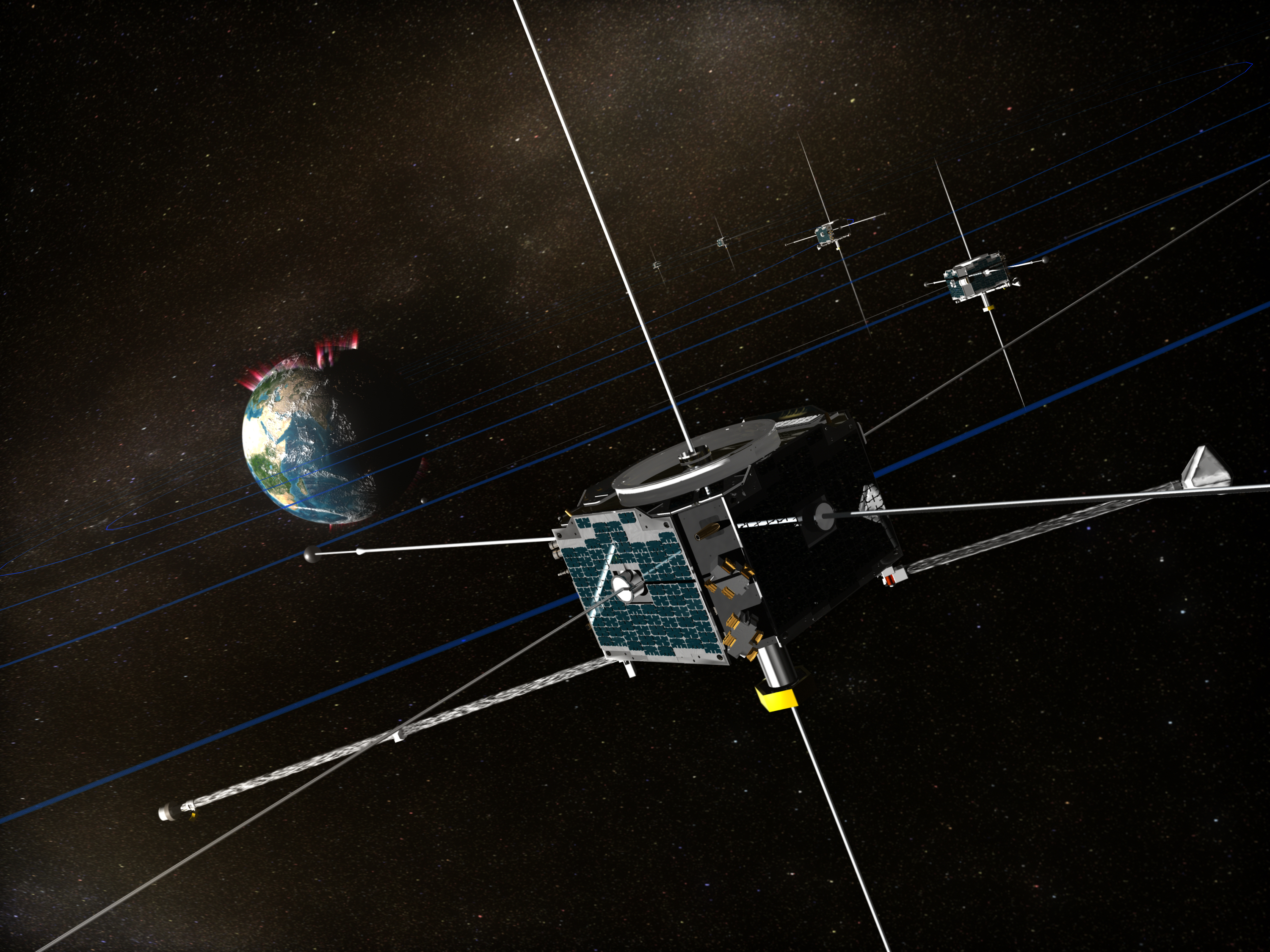
NET May 11: A SpaceX Falcon 9 rocket will launch NASA's TRACERS mission, carrying a pair of synchronized spacecraft to orbit. TRACERS will study magnetic reconnection Earth’s atmosphere caused by interaction with passing solar activity, and help researchers better understand and prepare for impacts of solar activity on Earth.
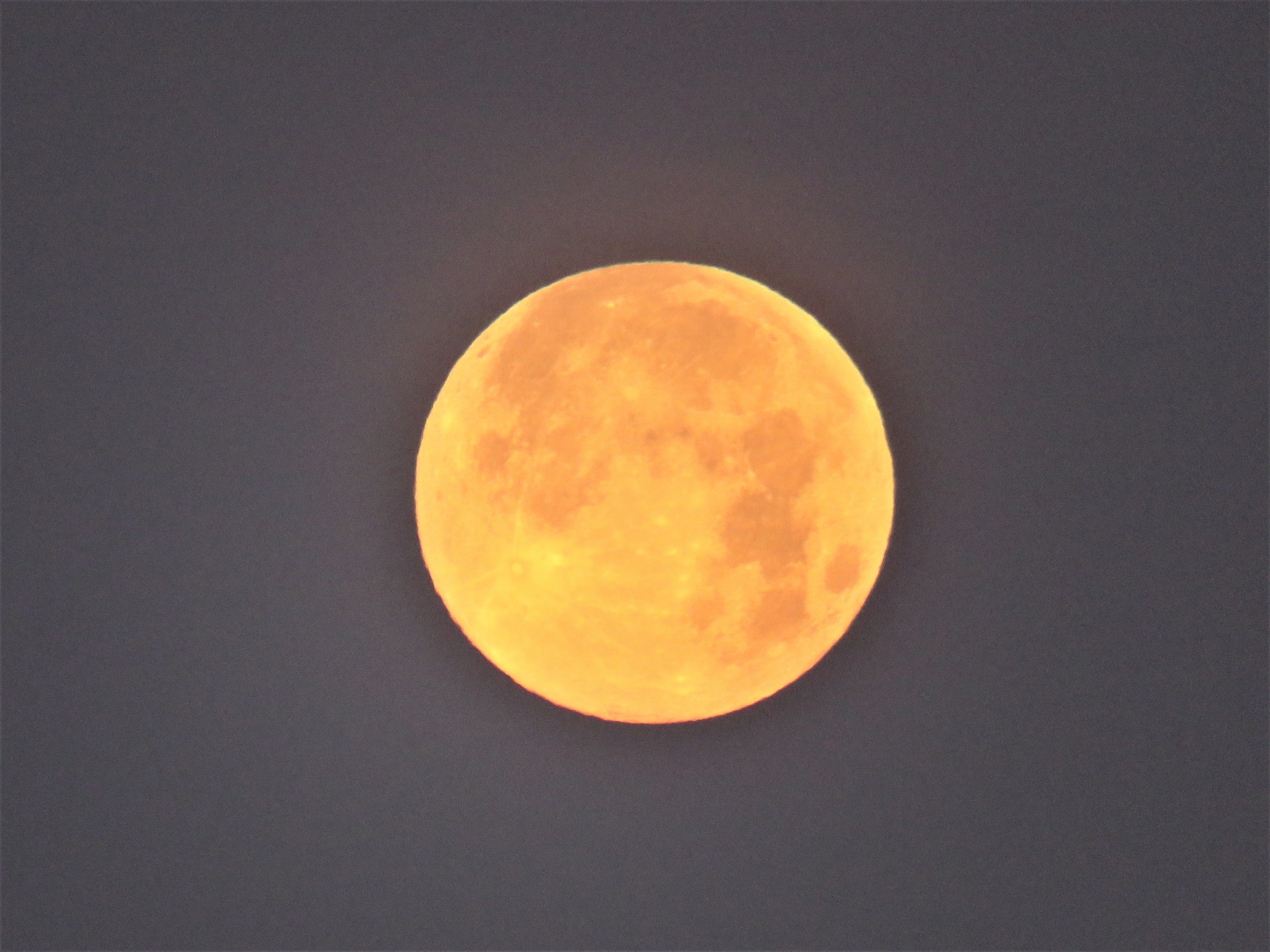
May 12: The Full Flower Moon rises on May 12. The official moment when the full moon reaches 100% fullness will occur on May 23 at 12:56 p.m. EDT (1656 GMT), according to the U.S. Naval Observatory.
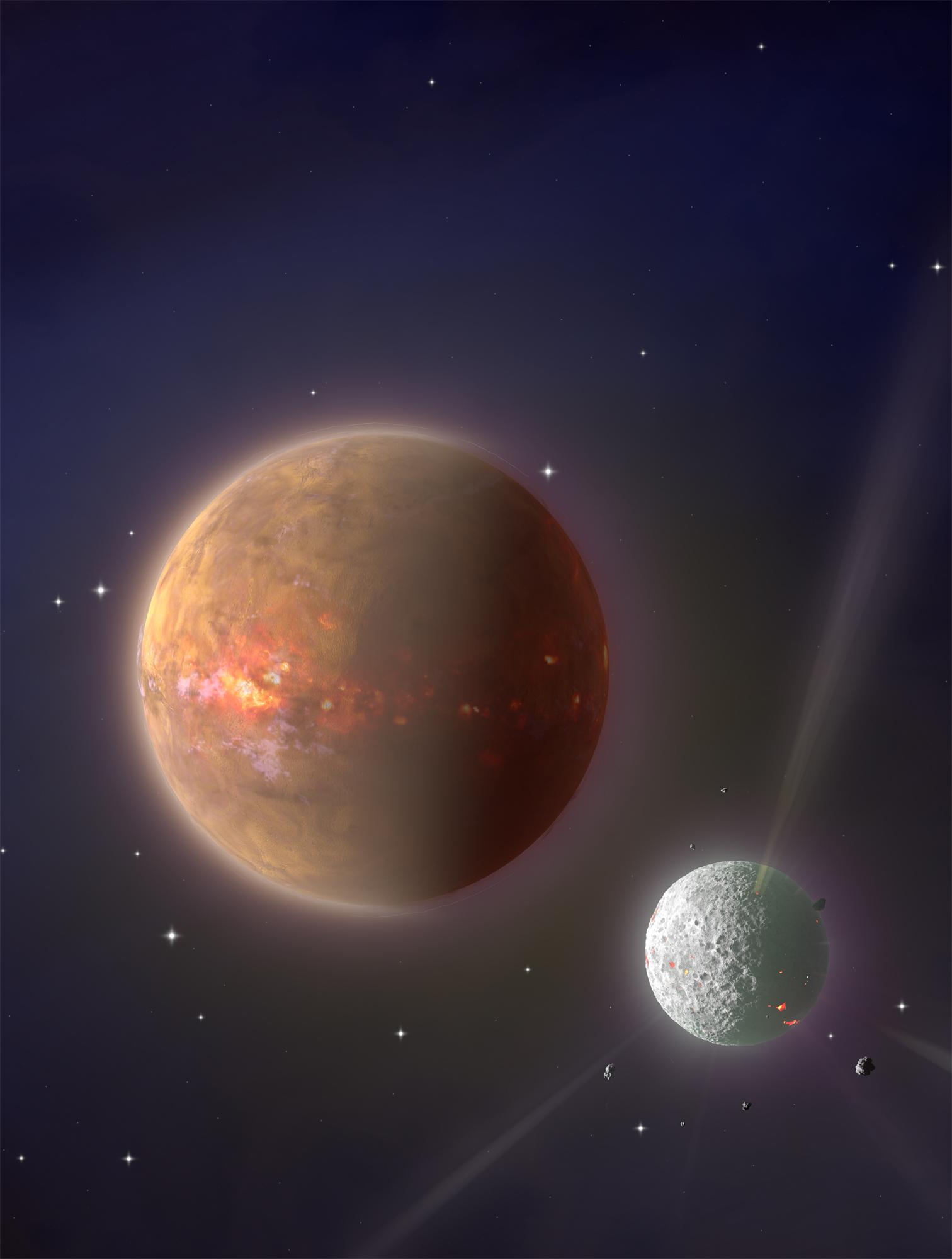
May 28-29: H2M2 will gather the top experts in Moon and Mars architecture, science, human health, innovation, policy, STEM education, and innumerable other disciplines who will provide the latest news about and generate momentum for our Moon and Mars goals.
-
The objective of H2M2 is to advance the goal of a sustainable and permanent human presence on the Moon beginning in the late 2020s and on Mars no later than the 2030s.
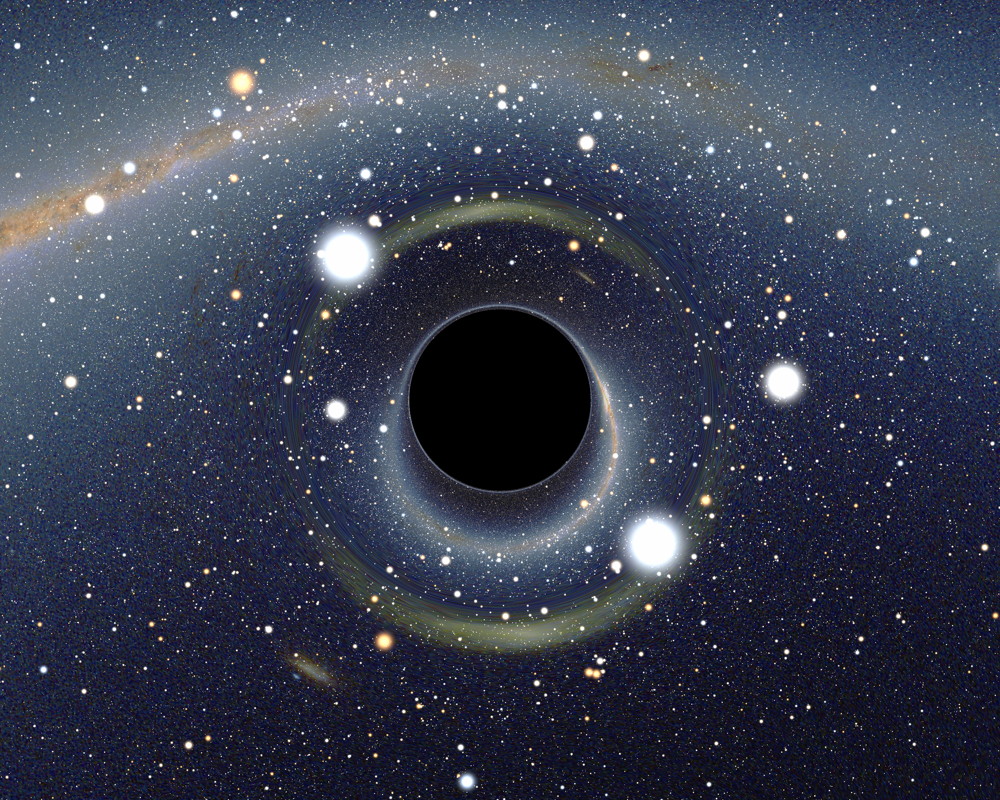
May 29 - June 2: Contact in the Desert has been the world’s leading event for those intrigued by UFOs, UAPs, and extraterrestrial life. Our mission is to provide a platform for open discussions, cutting-edge research, and firsthand experiences in the field of unexplained phenomena. Each year, thousands gather to connect with experts, share stories, and dive deep into the mysteries of our universe.
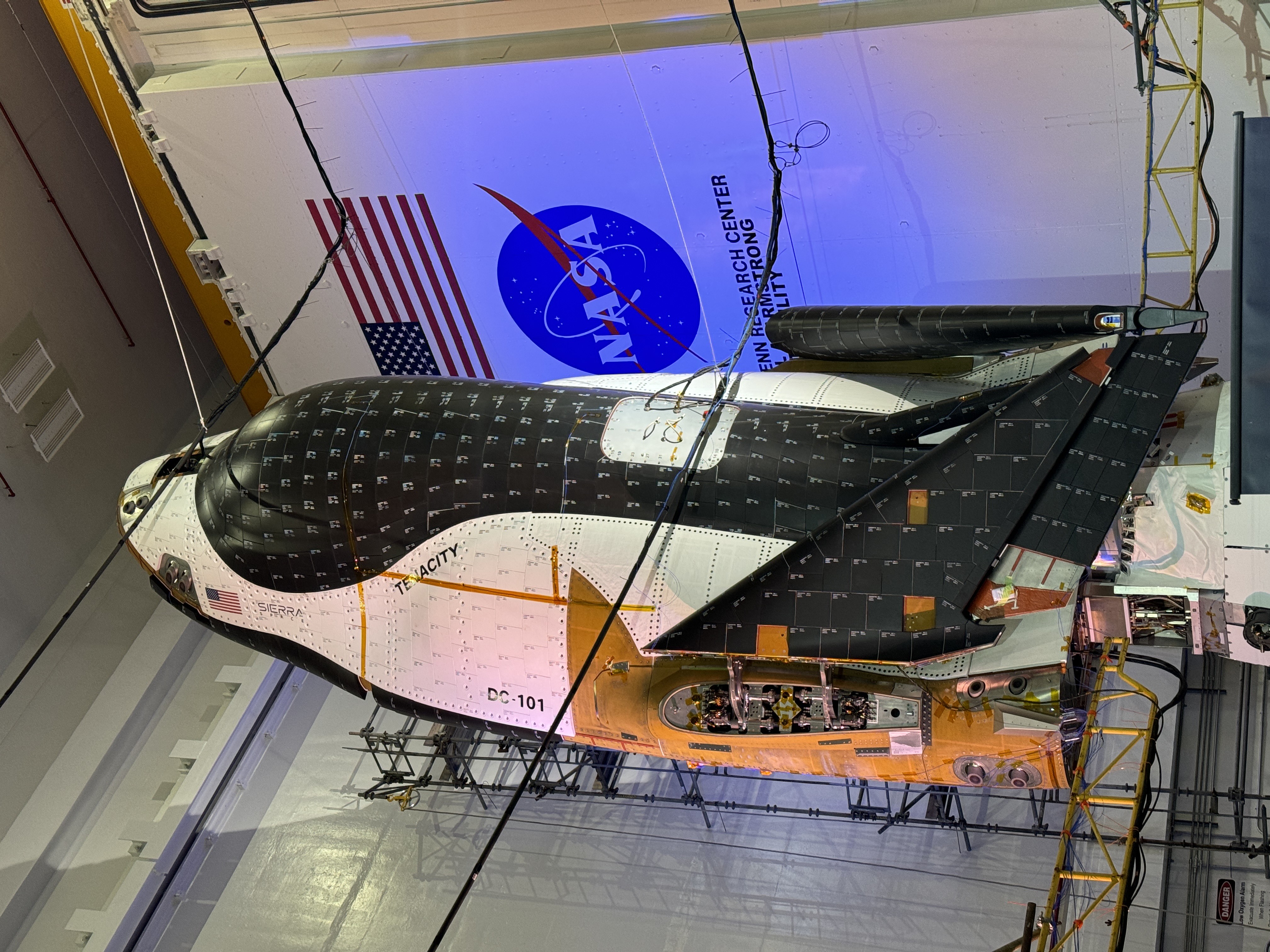
NET May 2025: United Launch Alliance (ULA) will launch Sierra Space's Dream Chaser space plane aboard a Vulcan Centaur rocket. The mission will launch from Space Launch Complex-41 (SLC-41), at Cape Canaveral Space Force Station, in Florida. the first-ever winged commercial spaceplane, to the International Space Station.
-
Read more: ULA delays Dream Chaser space plane launch to certify Vulcan Centaur rocket for US military missions
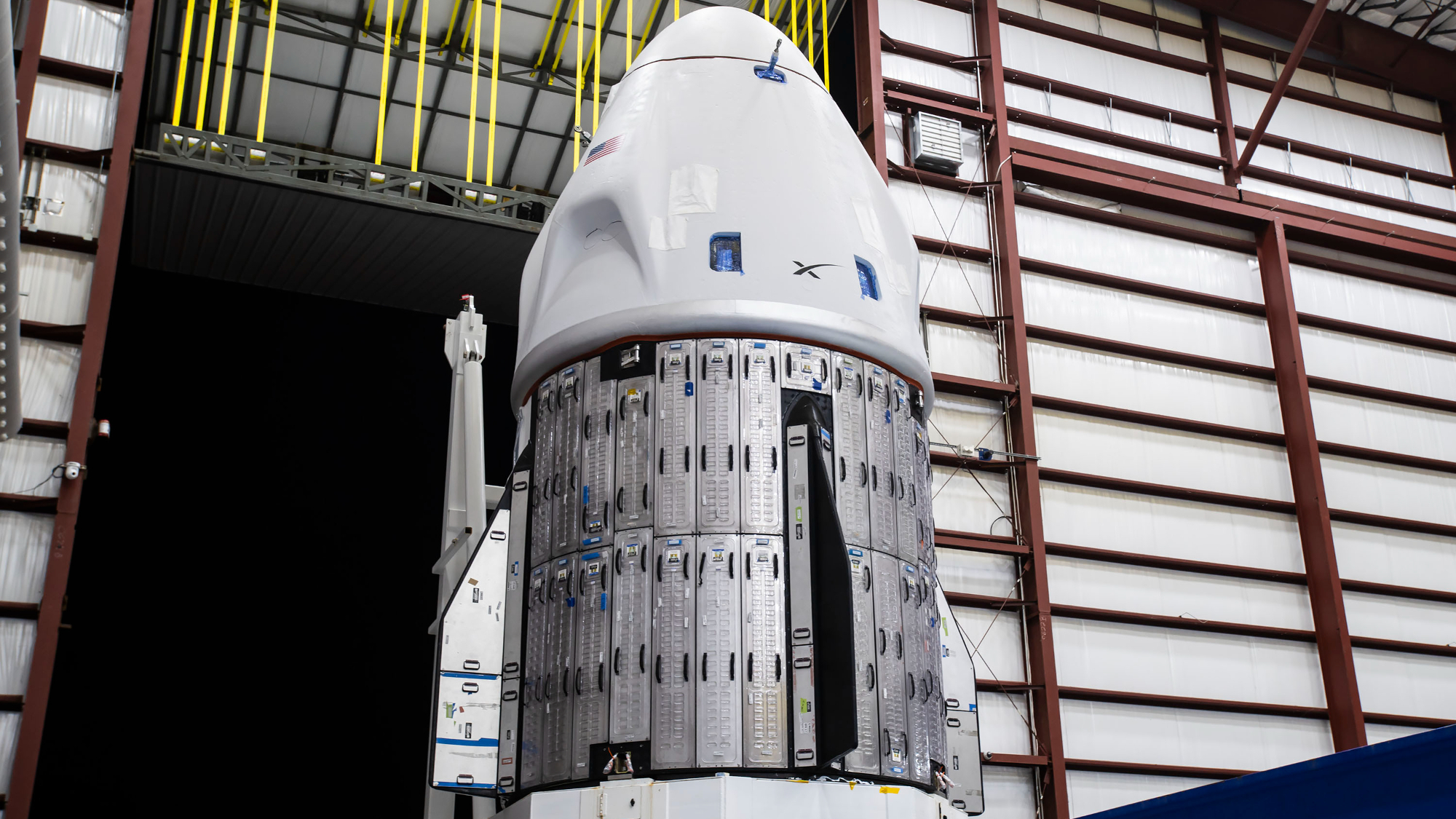
NET May 2025: SpaceX will launch the fourth crewed mission for Houston-based company Axiom Space. Former NASA astronaut Peggy Whitson will be joined by Shubhanshu Shukla of India, the of the European Space Agency's (ESA) Sławosz Uznański, from Poland, and Tibor Kapu of Hungary. The quartet will launch to the ISS on a mission to conduct scientific research, demonstrate technology and the continued commercialization of space.
-
Read more: Meet the crew for Axiom Space's Ax-4 mission to the ISS
June 2025
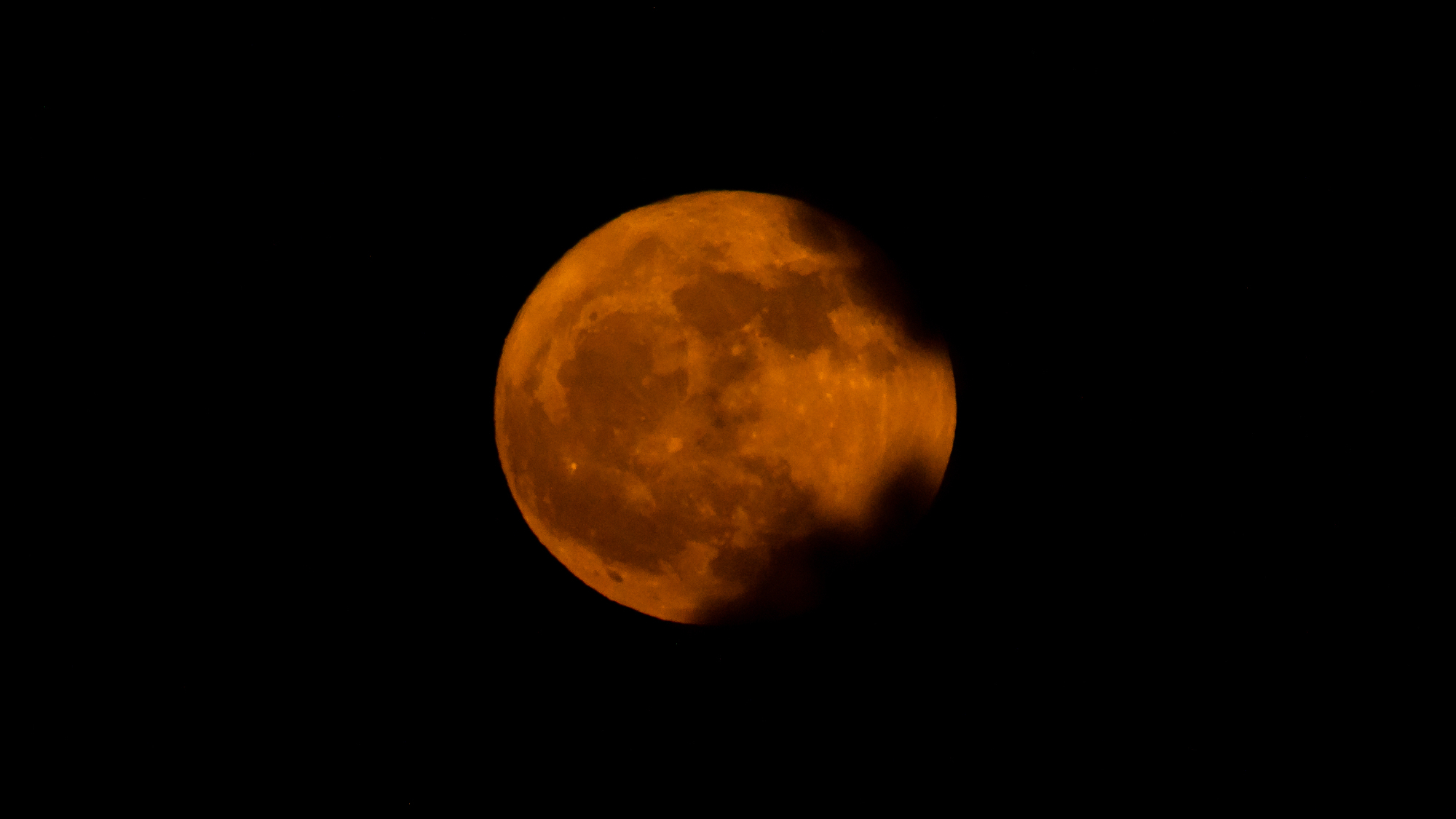
June 11: The Full Flower Moon rises at 3:44 a.m. EDT (0844 GMT). In the Old Farmer's Almanac, the full moon of June is called a Strawberry moon, from the berries that appear in the summer months in the northeastern parts of North America.

June 19-22: The annual International Space Development Conference (ISDC) is the keynote event of the National Space Society, bringing together leading managers, engineers, scientists, educators, enthusiasts, and business people from civilian, military, commercial, entrepreneurial, and grassroots advocacy space sectors - all working toward the common goal of developing a spacefaring civilization.
July 2025
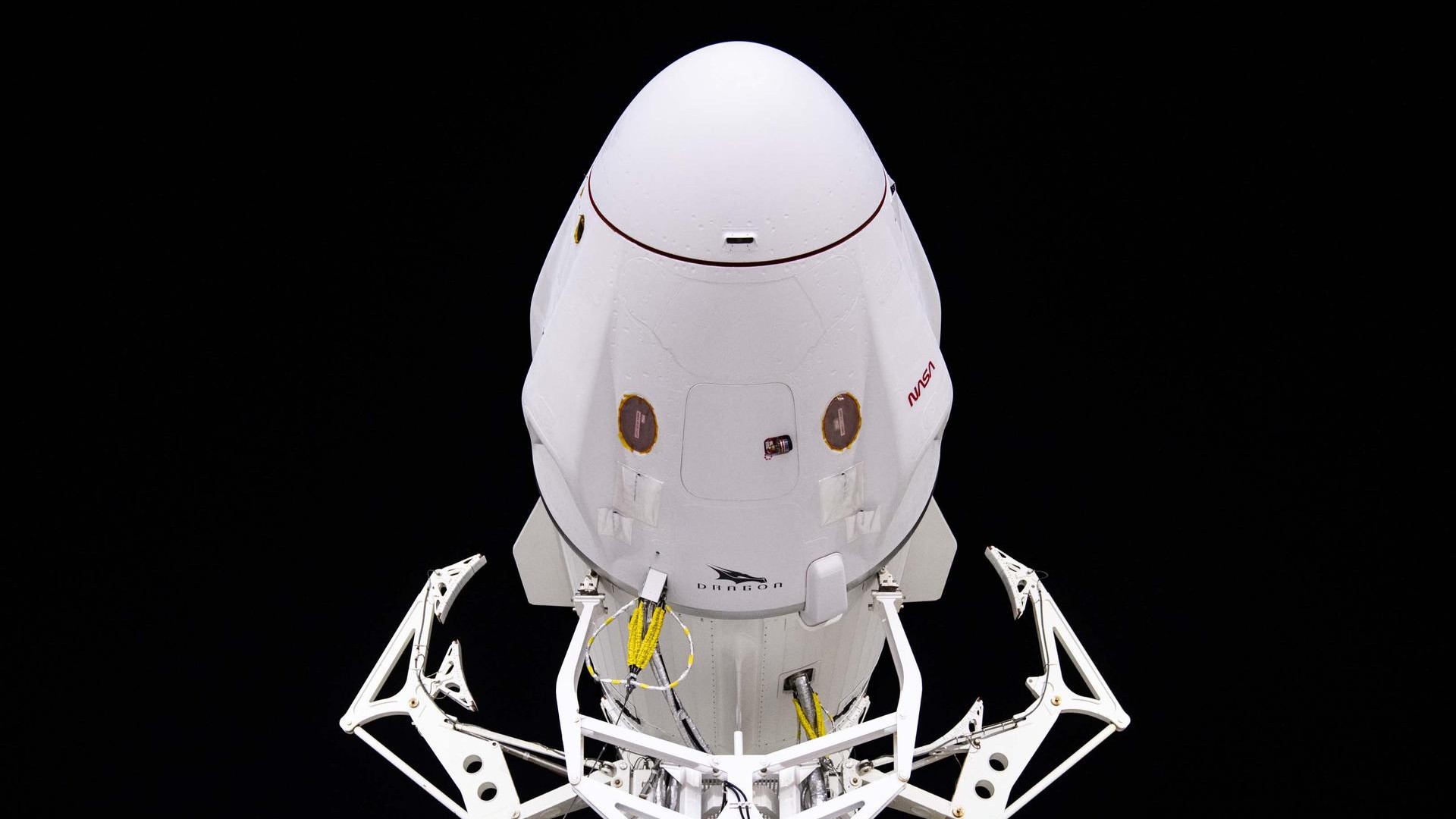
NET July: Crew-11 is the 11th crew rotation mission of SpaceX's human space launch to the space station through NASA's Commercial Crew Program. The mission includes NASA astronauts Commander Zena Cardman and Pilot Mike Fincke, JAXA (Japan Aerospace Exploration Agency) astronaut Mission Specialist Kimiya Yui, and Roscosmos cosmonaut Mission Specialist Oleg Platonov.
Booster return: Landing Zone-1, Cape Canaveral, FL
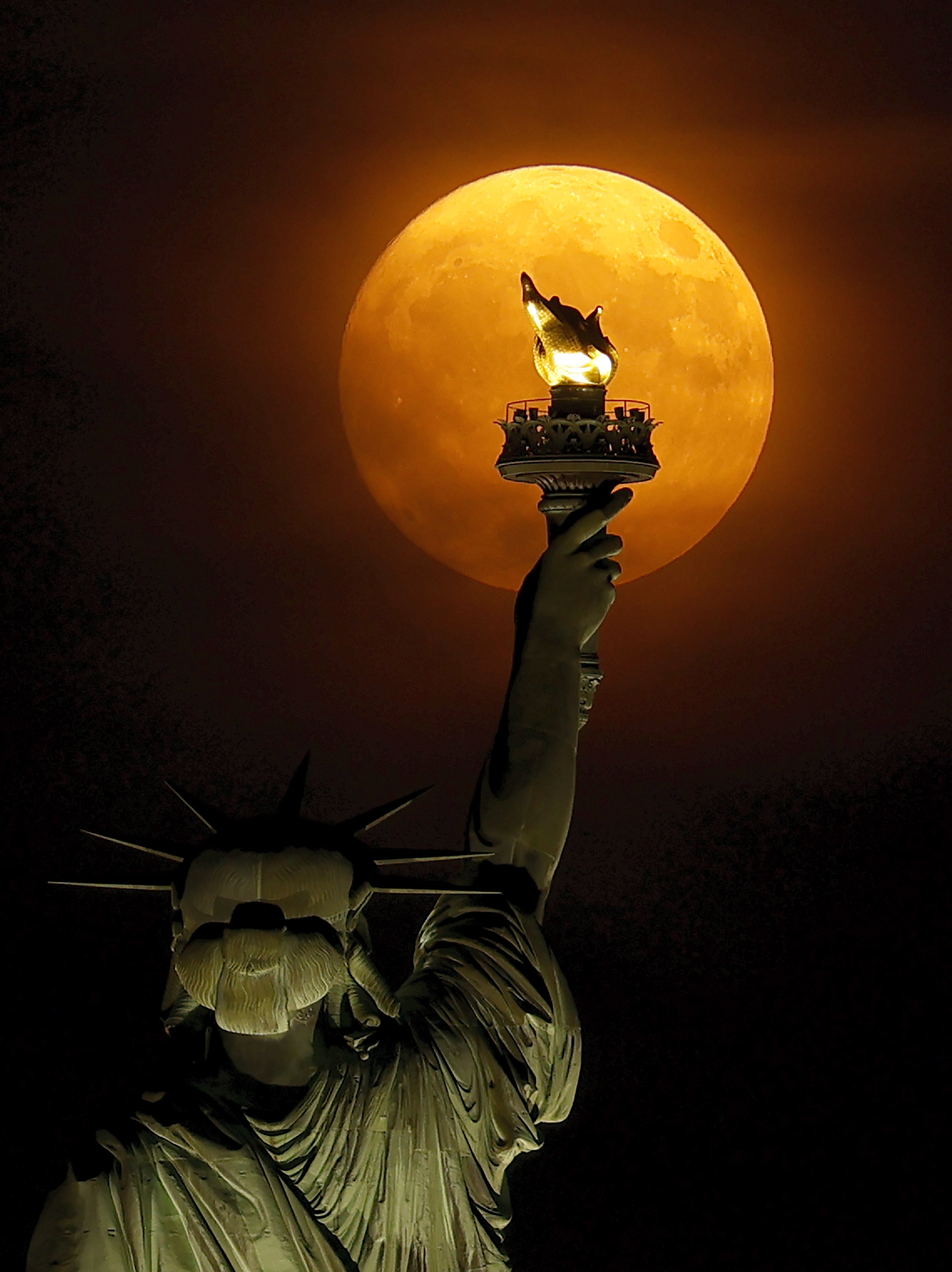
July 10: The July full moon is also known as the Buck Moon or the Thunder Moon, the former because it coincides with the time of year when male deer antlers are in full growth and the latter because it is also when thunderstorms are common in many parts of the world. The moon will officially reach full illumination at 4:37 p.m. EDT (2137 GMT) on July 10, but still appears relatively full for a few days around the peak.
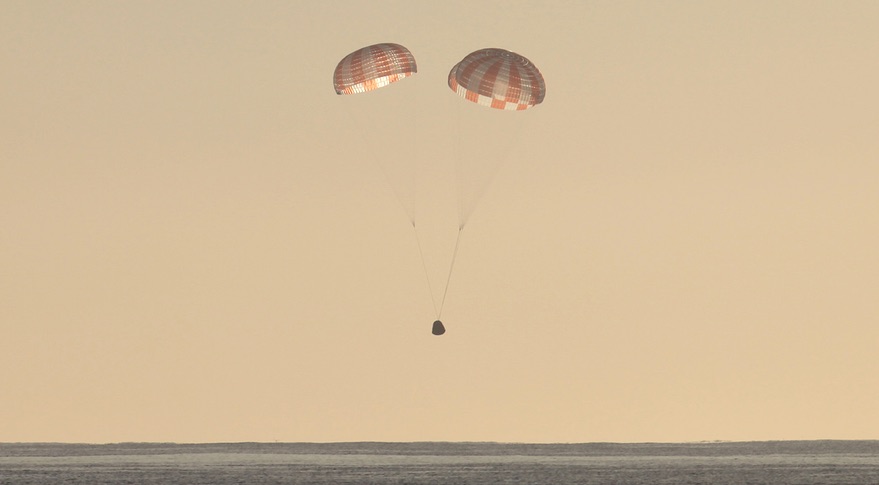
NET July: International Space Station (ISS) residents to launched aboard the SpaceX Crew-10 mission will return to Earth aboard their Crew Dragon Endurance. NASA astronauts Anne McClain and Nichole Ayers, JAXA (Japan Aerospace Exploration Agency) astronaut Takuya Onishi and cosmonaut Kirill Peskov will splash down off the coast of California to wrap up a four-month rotation on orbit.
August 2025

Aug. 9: August's full moon, the Sturgeon moon, will rise at 3:55 a.m. ET (0855 GMT). The timing of the full moon depends on one's time zone because lunar phases are measured according to the longitudinal position of the moon relative to the Earth against the sky; one's latitude doesn't alter the timing as it would with moonrise and moonset.
September 2025
October 2025
November 2025
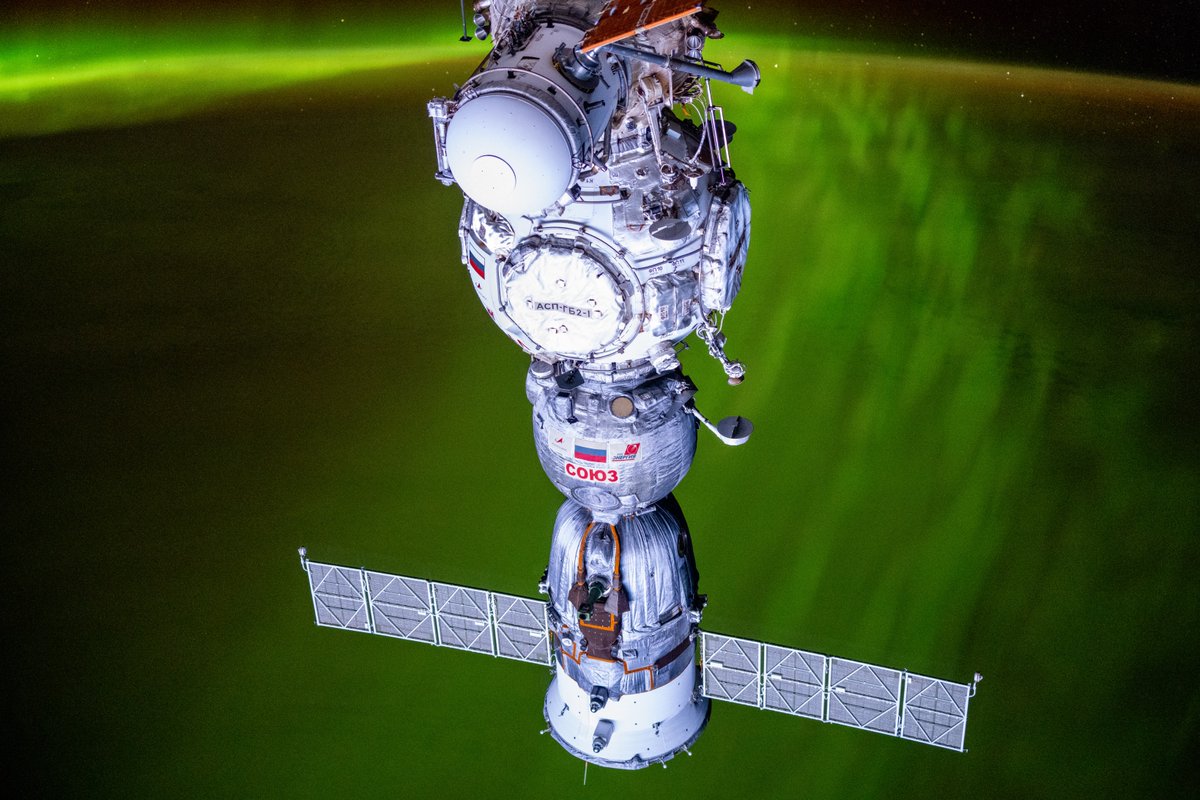
NET November: NASA astronaut Chris Williams will launch on his first mission to the International Space Station, serving as a flight engineer and Expedition 74 crew member.
Williams will launch from the Baikonur Cosmodrome in Kazakhstan aboard the Roscosmos Soyuz MS-28 spacecraft in November, accompanied by Roscosmos cosmonauts Sergey Kud-Sverchkov and Sergei Mikaev. The trio will spend approximately eight months aboard the orbiting laboratory.
December 2025
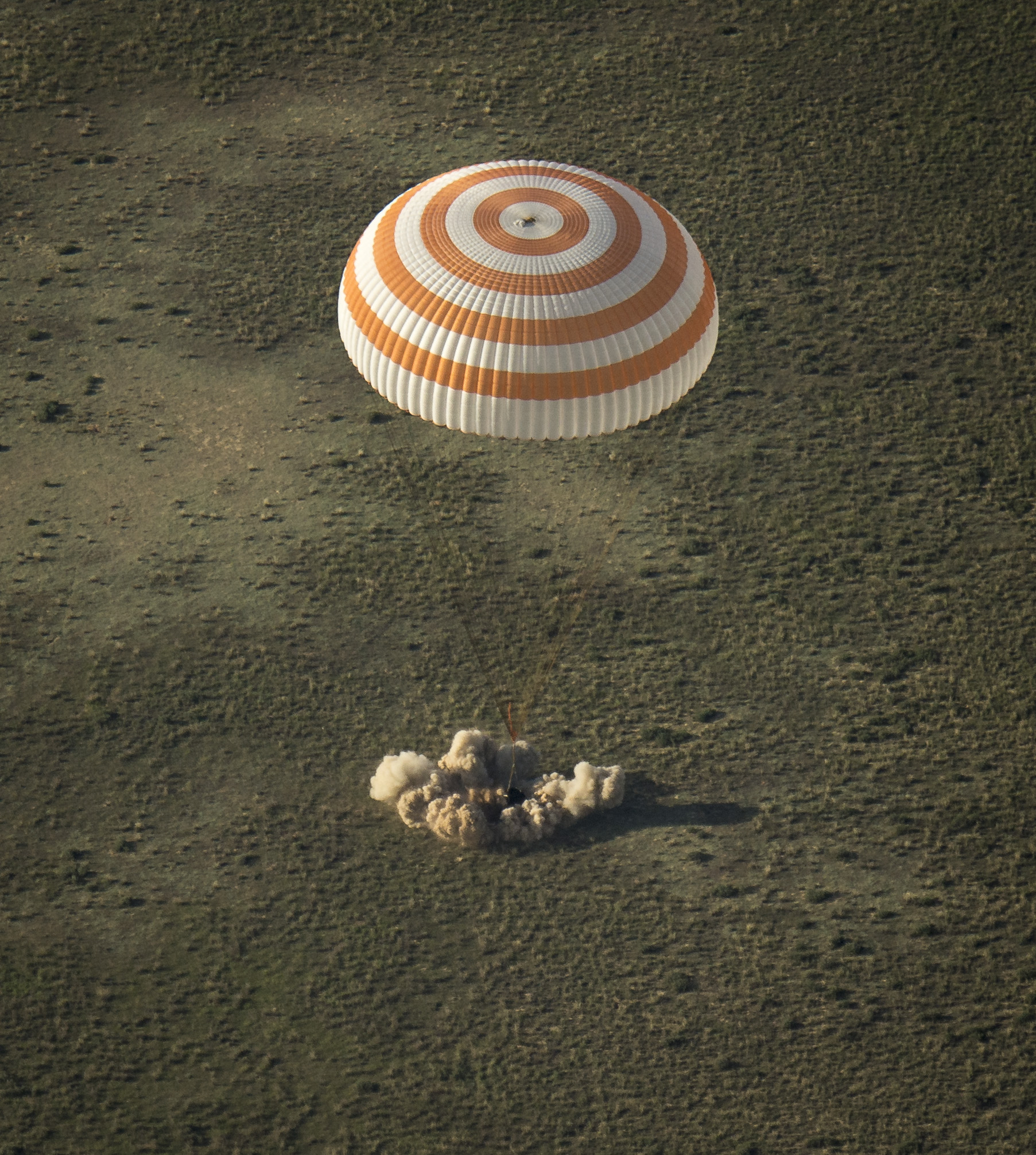
NET Dec: Roscosmos cosmonauts Sergei Ryzhikov and Alexei Zubritsky and NASA astronaut Jonathan Kim return to Earth aboard their Soyuz MS-27 spacecraft. They are scheduled to touchdown in Kazakhstan, wrapping up a six-month stint aboard the International Space Station.
2026
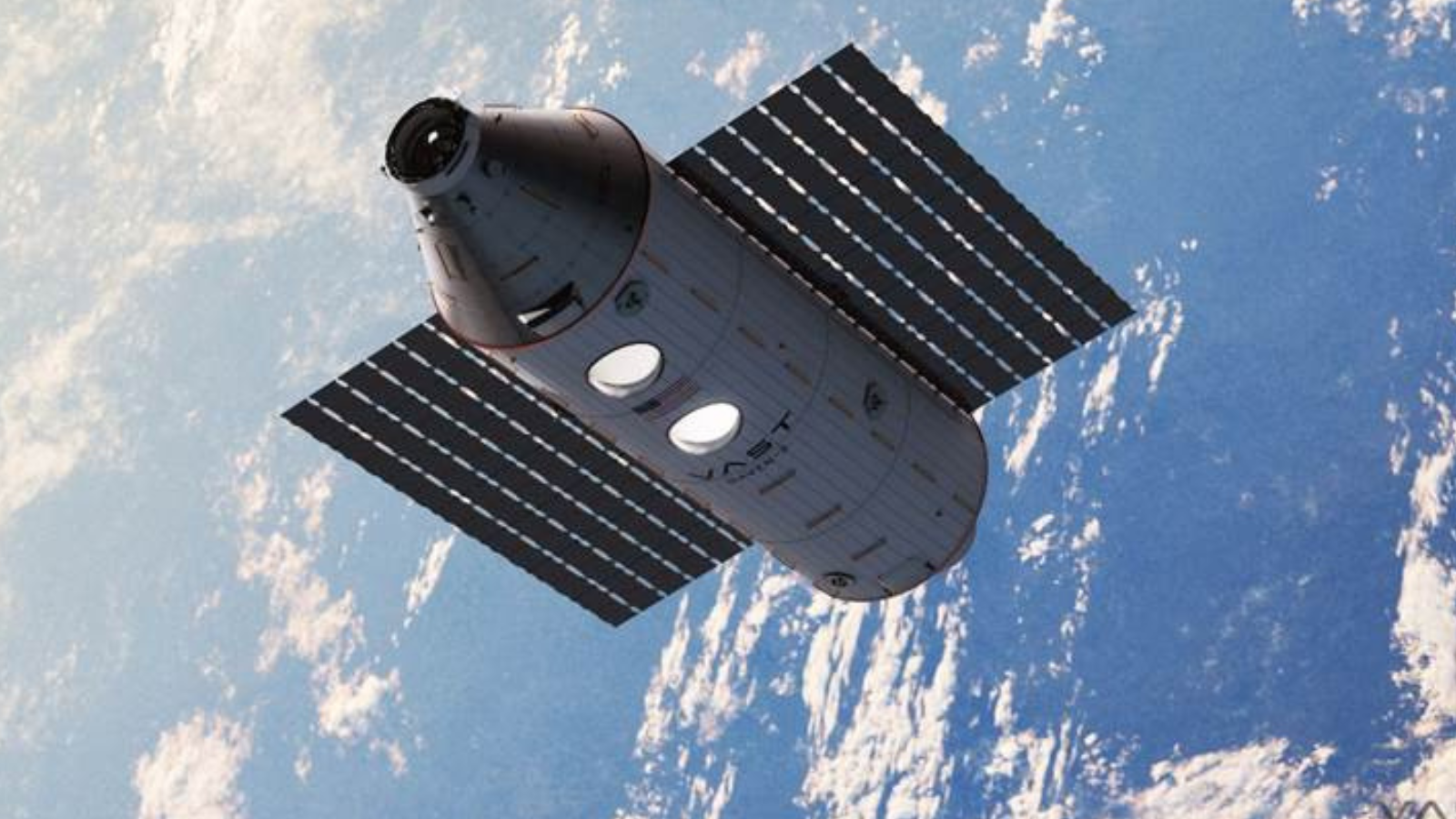
NET May 2026: California-based startup Vast Space plans to loft its Haven-1 outpost aboard a SpaceX Falcon 9 rocket no earlier than May 2026. Haven-1 — which will eventually be incorporated as a module into a larger space station, and will be followed in quick succession by Vast-1, a four-person jaunt to the new station that could last up to 30 days. Vast-1 will also launch atop a Falcon 9, and its astronauts will ride on a SpaceX Dragon capsule.
-
Read more: SpaceX and Vast want ideas for science experiments on Dragon spacecraft and Haven-1 space station
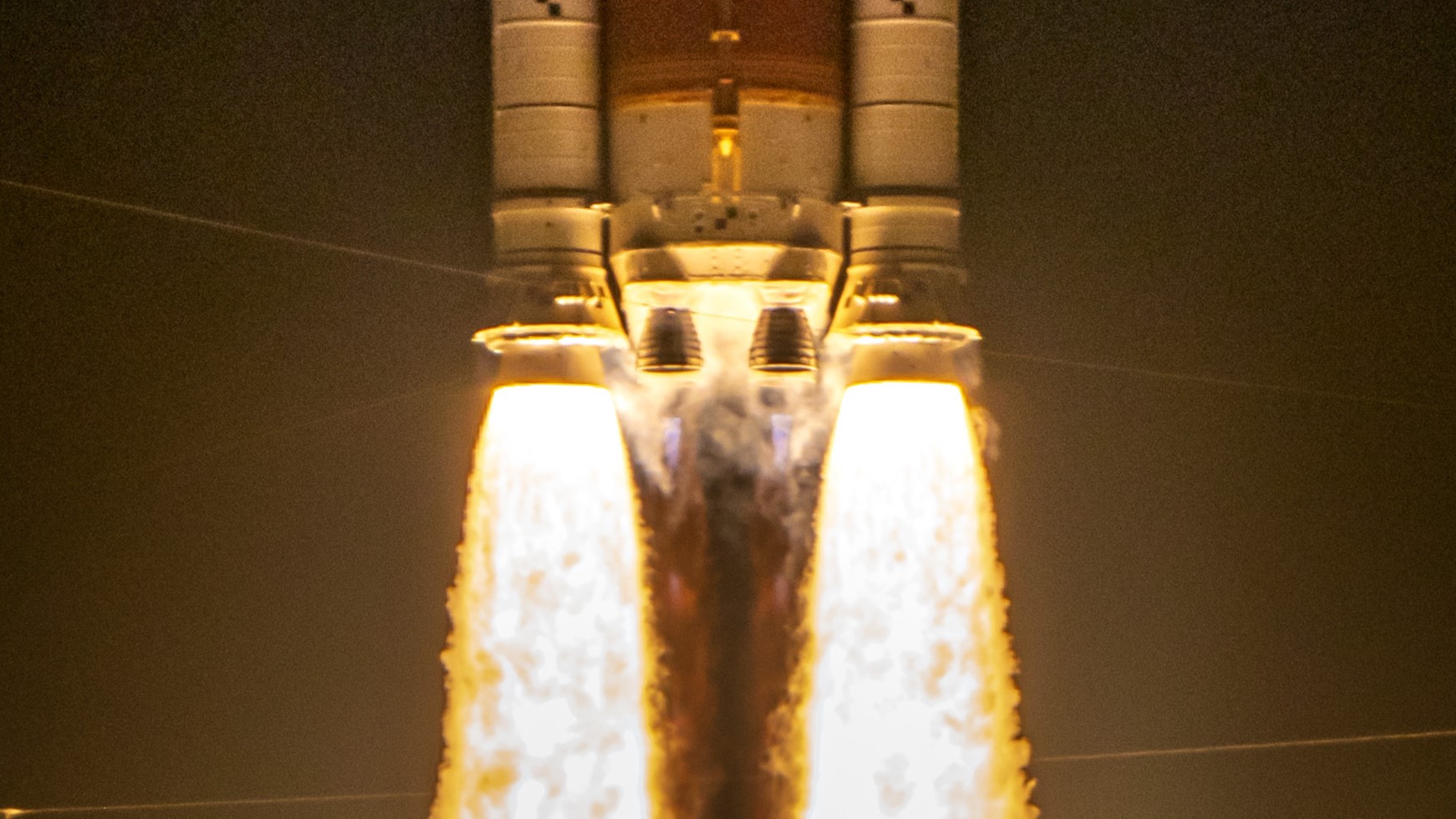
NET Spring 2026: Artemis 2 is the second scheduled flight of the Artemis program and the first crewed Artemis mission. Three astronauts from NASA and one from the Canadian Space Agency will use on a Space Launch System (SLS) rocket aboard the Orion spacecraft on the lunar flyby mission.
-
NASA commander Reid Wiseman, NASA pilot Victor Glover, NASA mission specialist Christina Koch and CSA mission specialist Jeremy Hansen will fly around the moon on a roughly 10-day-long mission.
Past Events
Browse past events >
Join our Space Forums to keep talking space on the latest missions, night sky and more! And if you have a news tip, correction or comment, let us know at: community@space.com.
Get the Space.com Newsletter
Breaking space news, the latest updates on rocket launches, skywatching events and more!

Space.com is the premier source of space exploration, innovation and astronomy news, chronicling (and celebrating) humanity's ongoing expansion across the final frontier. Originally founded in 1999, Space.com is, and always has been, the passion of writers and editors who are space fans and also trained journalists. Our current news team consists of Editor-in-Chief Tariq Malik; Editor Hanneke Weitering, Senior Space Writer Mike Wall; Senior Writer Meghan Bartels; Senior Writer Chelsea Gohd, Senior Writer Tereza Pultarova and Staff Writer Alexander Cox, focusing on e-commerce. Senior Producer Steve Spaleta oversees our space videos, with Diana Whitcroft as our Social Media Editor.
You must confirm your public display name before commenting
Please logout and then login again, you will then be prompted to enter your display name.










